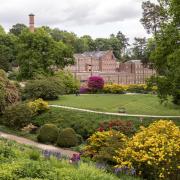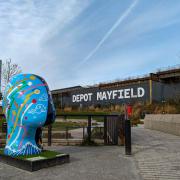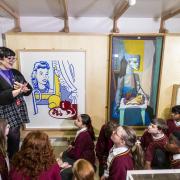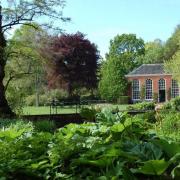One of the world’s biggest collections of penny farthings is in the unlikely location of a small coffee house in Knutsford, writes Andrew Griffiths

There is something about cakes and bicycles that go together, something to do with riders replacing all those lost calories. So finding one of the world’s biggest collections of penny farthings in the unlikely location of a coffee house in Knutsford provided the perfect excuse to indulge in the one without the effort of actually having to pedal the other.
I was at The Courtyard Coffee House on King Street to meet Glynn Stockdale, penny farthing rider, dealer, collector, long distance adventurer and museum curator. As we talked about this most iconic of English bicycles, I took the opportunity to sample that other English classic - a slice of Victoria sponge. Well, it would have been rude not to, wouldn’t it?
The penny farthing means different things to different people. To some it is synonymous with the Victorian era and conjures up images of busy London streets, with men sedately pedalling past flower girls, while wearing top hats and tails. To others, it is forever associated as the logo from the classic 1960s TV series, ‘The Prisoner’.
Glynn first became captivated by an old penny farthing chained up outside a garage in Timperley.
‘I have always loved the big wheel. As a boy of thirteen there was a petrol station that had a very old, rusty penny farthing chained to the petrol pumps, which I always admired and stood alongside as a little lad.’
But Glynn was 40 before he actually consummated his relationship with the big wheel, so to speak, and acquired his first penny farthing. He had not been a cyclist previously (his sport had been water polo) so he found himself on something of a sharp learning curve.
He soon discovered that penny farthings are not the easiest things to ride. ‘I practiced against walls and gates and god knows what. It took me three weeks.’
This was 1978 and Glynn, by now an antiques dealer, soon sold his first machine and bought another. There were now two penny farthing riders in Cheshire, and competitive men being what they are, it wasn’t long before a race was organised and the Great Penny Farthing Race of Knutsford was born.
Medieval mappers would draw their maps according to the prominence and significance of features, rather than their geographical location as such. If a medieval cartographer was to make a map for penny farthing enthusiasts, then Knutsford would be somewhere round about bang in the centre of the known universe.
The first Great Race, a three hour endurance race, took place in 1980. The event now happens every ten years and the next is scheduled for 2020. Penny farthing enthusiasts come from all over the world to take part in what has grown into a truly iconic showcase for some of vintage cycling’s most dedicated eccentrics.
‘I went to America last year and I already have four entries for 2020, from there. So it is worldwide now,’ says Glynn.
Glynn started buying penny farthing machines for other people to ride in the charity races, but things soon got out of hand. ‘Once I started it got to be an obsession,’ he confesses.
‘The Penny farthing was only made for 20 years and I wanted the best machine for each year, so really I should have had 20 machines. But I ended up with 74.’ Oops.
Glynn is a keen historian and has retraced many of the classic routes from Penny farthing history, and the photos from his adventures hang on the coffee shop walls. One ride took him from Land’s End to John O’Groats. Another followed in the big wheel tracks of the famous American adventurer Thomas Stevens and crossed the USA from San Francisco to Boston, which makes him the only Englishman to cross the States on a penny farthing in the 20th Century.
So what is the appeal of riding these antiquated machines?
‘Terrible thing to say to you - but you feel above, and superior to your fellow men,’ said Glynn. ‘But you haven’t got to lose sight of the fact that a one inch lip on a manhole will bring you down.’ There is a lesson for life there.
Glynn tells me that people who photograph him riding often remark on his worried expression as he scrutinises the road immediately ahead. The Victorians, predictably enough, had a word for it.
‘They called it ‘bicycle face’, it was a well known condition,’ he says. w



























